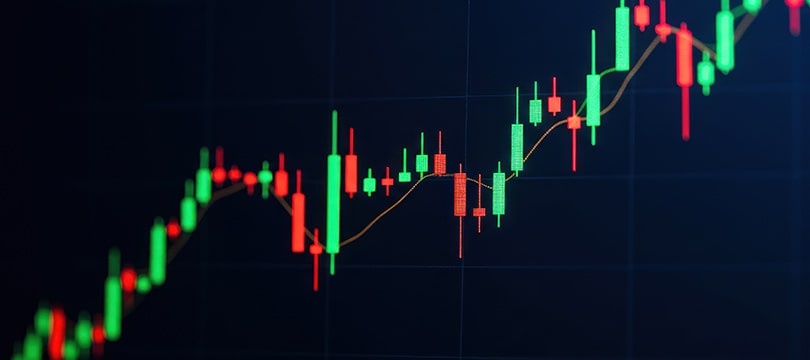Is Diversification Possible in Forex Trading? If so, is it a useful move? The answer to both questions is yes. Not only is it possible to diversify in Forex Trading, but it is also practically a must for traders who want to operate more effectively and increase their chances of profit.
In this article, we delve into the topic, explaining the advantages that diversification brings to Forex Trading and presenting two different methods.
Why Diversify in Forex
There are numerous reasons why it is beneficial to diversify your portfolio in Forex Trading. Below, however, we present the three most obvious and important ones.
The concept of diversification. Diversification is a somewhat
universal concept, meaning it can be applied with relative success in any market, for any type of investment. It is the mechanism that underlies it, its raison d'être, that boasts a certain versatility. After all, diversifying means investing in different assets, in order to reduce the risk caused by potential market changes. From this point of view, the famous metaphor of the basket and eggs is more apt than ever. All of this also applies to the foreign exchange market which, after all, is a market like any other (although it has some peculiarities, especially in terms of liquidity).
The volatility of diversification. Volatility reduces risk and contains the effects of negative events. In a sense, it harbors the thought of defeat and, rather than denying it, allows you to face it in the best possible way. Now, diversification fulfills a more or less salvific function depending on the degree of volatility and unpredictability. The more volatile and unpredictable a market is, the greater the role that diversification actions assume. Now, the foreign exchange market is volatile. Sure, we are not at the levels of the stock market, but oscillations are present and in good quantity. Therefore, also in light of this characteristic, diversifying in Forex is possible and
necessary.
The relative readability of Forex. Diversifying is not at all simple. In fact, to produce a well-diversified portfolio that truly represents a bulwark against risks, it is necessary to have a broad and deep knowledge of the market, as well as of the assets that compose it. Forex creates the best conditions for developing this kind of knowledge, at least compared to other markets such as the
stock market. The reason is simple: the amount of elements to study is less. Knowing a stock, in fact, means knowing both the issuing company and the reference segment, as well as its history. Knowing a currency, on the other hand, means obviously knowing the history, but also the reference economy... And little else.
The Correlation Method
How do you diversify in Forex? Actually, there is more than one method. The good news is that these methods do not exclude each other. In fact, albeit with some difficulties, they can be integrated. Also because the criteria are completely different, and do not contradict each other. The first method, which among other things is the most widespread, is the correlation method.
It consists of composing the portfolio taking into account correlations. Generally, the portfolio should be composed, in variable percentages, of pairs having negative correlation. The main pairs should subsequently be involved in larger investments compared to pairs with opposite correlation. In this way, even assuming that the trade on the main pair went wrong, you could recover part of the capital with the trade of the correlated pair. Obviously, the trades must be correlated. Another evident aspect is that this basic method reduces profits. However, it is an almost physiological price to pay, a sort of insurance policy.
How do you compose a portfolio useful for correlation diversification? Obviously, it is necessary to
know the correlations. Basically, one should examine a given period, and study the movements of all the pairs. Fortunately, on the web but also in the form of documents offered directly by brokers, there are explanatory tables that, in general, take into consideration the last twelve months. These are grids in which each cell corresponds to a correlation (union of the x and y axes).
Correlations always oscillate between -1.00 and +1.00. In the first case, the correlation is perfect and indicates an inverse proportionality relationship (when one pair decreases the other increases by the same amount). In the second case, the correlation is equally perfectly positive, i.e. it indicates a direct proportionality relationship (when one pair increases, the other also increases). In practice, these values are extremely rare. Values that approach or even exceed 0.80 (regardless of the sign) are already very strong.
For example, GBPUSD is positively correlated at 0.88 with EURUSD. This means that when the pound appreciates against the dollar, it is very likely that the euro also appreciates against the dollar. Similarly, EURUSD is positively correlated at 0.81 with AUDUSD, so when the euro appreciates against the dollar it is likely that the Australian dollar also appreciates against the (US) dollar.
The Underlying Economy Method
This is a completely different method but it can also be used in the presence of the first one (the correlation method). The principle imposes a change of vision. In fact, it takes into consideration not only eminently mathematical elements, but also
economic ones. It consists of examining the underlying economies. Now, all "normal" currencies (from this discussion cryptocurrencies are excluded) are linked to an economy. The USD is linked to the US economy, the euro to the eurozone economy, the AUD to the Australian economy and so on.
This link is expressed not only from a functional point of view, i.e. it is not limited to the fact that a given economy is based on the spread of that given currency, but also analytically. In short,
the underlying economy influences the currency.
Therefore, a good method of portfolio composition is to consider pairs that, in both factors, contain currencies whose economies have an interdependence relationship. Obviously, assuming that a
total interdependence is not possible, not in a world globalized to this point.
In this way, when an economy performs very poorly, and drags its currency with it, the trader can still generate profit by trading on currencies that are immune to the poor performance of that given economy.
This method has a side effect: it leads to integrating into your portfolio "exotic" currencies, with low liquidity, which could de facto be less readable, at least compared to the most famous currencies.




